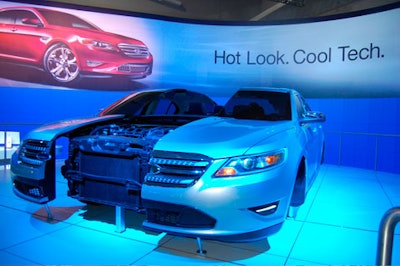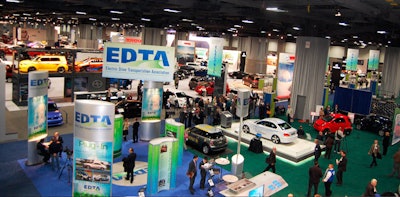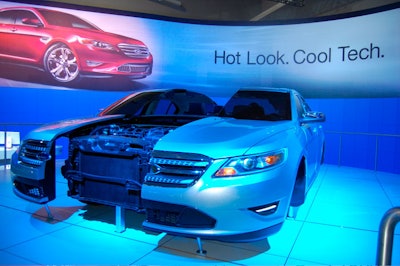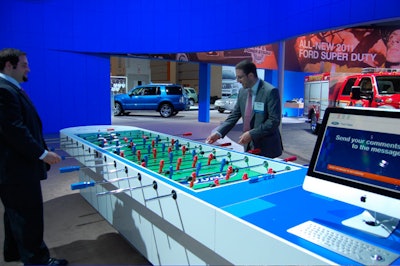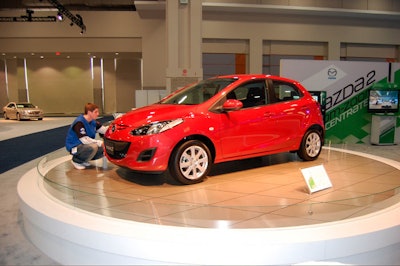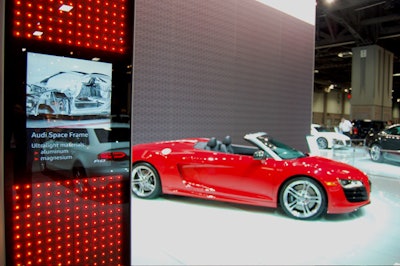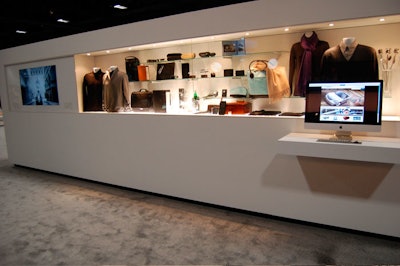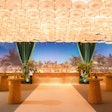Consumers found four major changes at this year’s expo, said show chairman Charles S. Stringfellow Jr. of the Fairfax-based Brown Automotive Group. In an unsurprising move, “with General Motors downsizing, they took one third less space and showed only four brands versus eight last year,” he said. In reverse, profitable Ford, over acres of blue and white carpet, increased its footprint by 2,000 square feet. Debt-ridden Chrysler, meanwhile, moved from the show’s main exhibit floor to the lower level, home of the imports. Stringfellow added that the most significant change was the expansion of the showcase for green car innovations. “Last year, it wasn’t even in one of the halls,” he said. “You had to look for it off by the entrance.”
This year, bright green signage led consumers to the “Advanced Technology SuperHighway”—a 65,000-square-foot display of the latest developments in electric, hydrogen, clean diesel, natural gas, bio-fuel, and ethanol, as well as advances in occupant and pedestrian safety. With gas prices on the rise, the of-the-moment hybrids included the Chevrolet Volt, Nissan Leaf, and Honda Insight.
Ford’s spacious exhibit, on prime real estate at the entrance of the main exhibit hall, was the show’s most interactive. At the “Taurus Theater,” three guests at a time could step inside a cut-away car simulation for a two-minute video spotlighting a dozen new innovations. A nearby foosball table offered as a break from engines and accessories.
In addition to staging by Hargrove, public relations and promotions for the Washington Auto Show were provided by Atlanta-based Pomerance & Associates.
